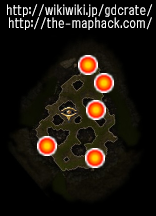
Later, when veterans of the Spanish-American War and World War I were laid beside the Civil War dead, we kids, barefooted in season, stood at attention wherever we were as the neighborhood echoed the bugle notes of taps. Colored Troops-free blacks and former slaves who had fought for the Union-were segregated in death as they had been in life. Yet within that cemetery, beside the back wall, a few dozen U.S. Every Memorial Day, black citizens wearing patriotic sashes paraded there to hear music and speeches honoring the soldiers who had died to make them free. Spread across the surrounding acres were more than 1,300 graves marked by government-issue headstones. Around it were black-painted cannon barrels set in concrete, and pyramids of cannonballs left over from the Civil War. On a mound at the center of the Yankee cemetery was a 70-foot flagpole flying the 48-star Old Glory.

To the right was the white picket fence that enclosed Green Hill, where my parents, grandparents and some of my great-grandparents are buried, and soon enough I will be too.įor us, those cemeteries were park and playground our parents had courted there we knew every oak and cedar, dove and chipmunk. To the left ran the stone wall around the Danville National Cemetery, which everyone called the Yankee cemetery, because that’s where Union soldiers who died in the local tobacco warehouse prisons during the Civil War were buried. The house that my grandfather built in 1909 faced the juncture of two cemeteries.

It was lined with glowing maples, and we seldom had to interrupt our ball games to let a streetcar pass. Lee was the street of my boyhood, my paper route, my deepest roots.

Lee School, where I played the role of General Lee in our fifth-grade pageant much more convincingly than Martin Sheen did in the film Gettysburg. I grew up on Lee Street in Danville, Virginia, the last capital of the Confederacy, and I attended Lee Street Baptist Church and Robert E.


 0 kommentar(er)
0 kommentar(er)
